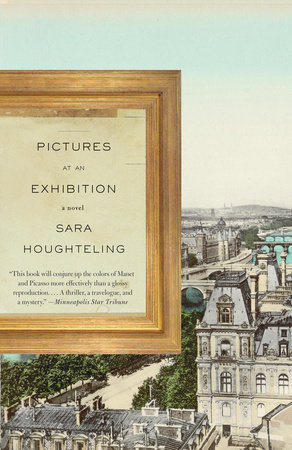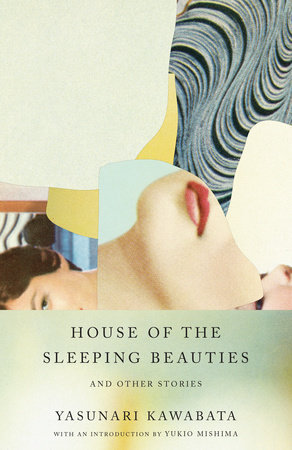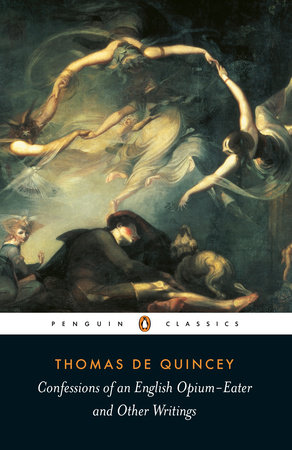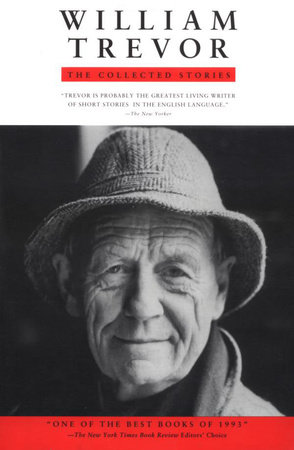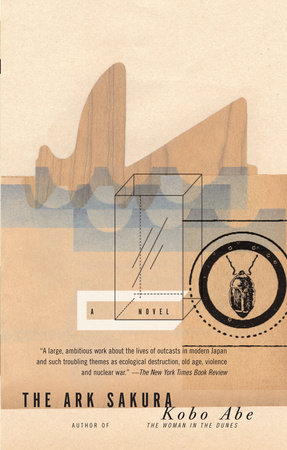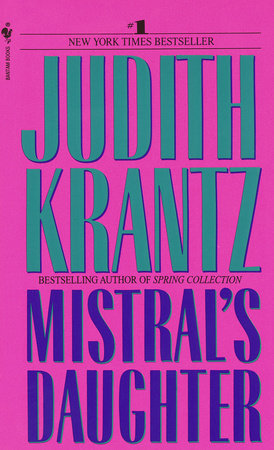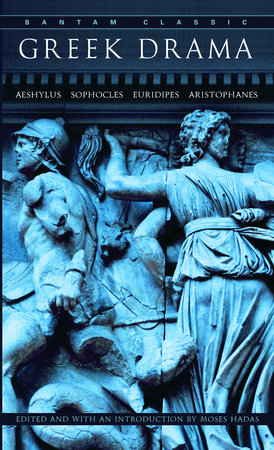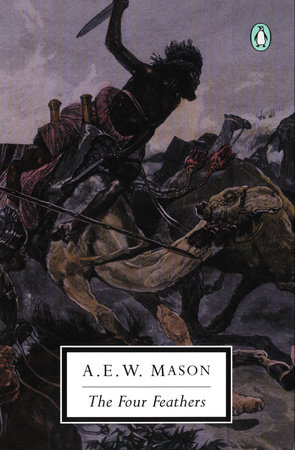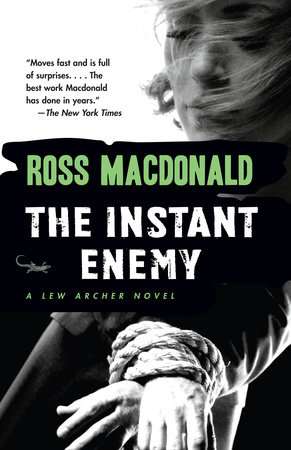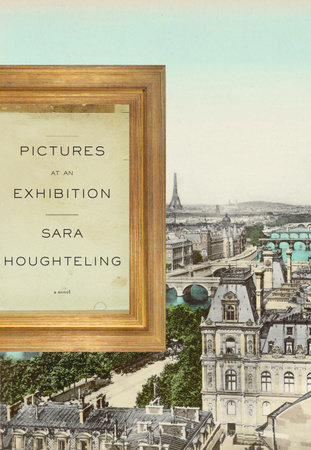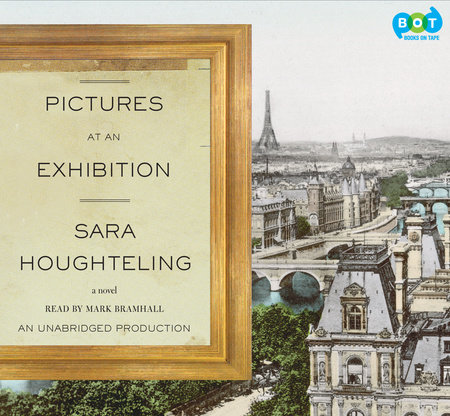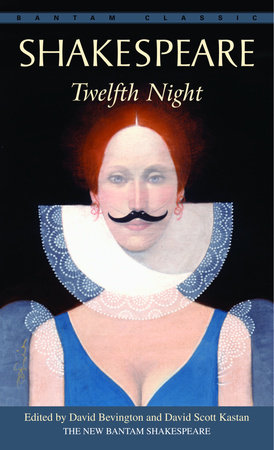Author Q&A
Q: Pictures at an Exhibition tells a story that centers on the looting of European art in Paris during World War II. What drew you to this time and place, and where did the idea for this novel come from?
A: My father’s family lived in Paris after the war. My grandfather was officially working for the Marshall Plan, but was in fact a member of the OSS—the precursor to the CIA—gathering information about French bridges in preparation for the possible next war. My grandmother Fiora’s stories from this time made me feel as if I had been living on rue Scheffer in the 1940s. She told me about the Russian count who lived across the courtyard, about the rationing of butter and gasoline, and how she was recognizable as an American to Frenchmen on the street by her shiny hair: the French used the same soap to wash their hair as they did the floor and the dishes. Only Americans used shampoo, imported in their suitcases, alongside silk stockings, cigarettes, and coffee. My father’s memories are a child’s memories: pushing a toy boat in the Luxembourg Garden fountain; wearing short pants even in winter; sharing the tub with my grandmother’s friend’s children since the French family couldn’t afford to heat the water for their bath; being surprised that French children did not like peanut butter. I found this contrast between adult and childhood memories intriguing. I knew I wanted to write about France in this post-war period, and I knew I wanted to write about Edouard Manet’s paintings, which I find beautiful and unsettling. Whenever I was stuck in the novel, I would study a new painting and see where it took me.
Q: Is it true that many of your central characters are based on real people? How did you come across these individuals and what drew you to them?
A: Rose Clément is the novel’s most important historical figure. She takes her name and much of her story from Rose Valland (1898-1980), the curator of the Jeu de Paume. Valland stayed on in the Modern art museum after it was occupied by the Nazis and transformed into a sorting center for looted artwork. The Nazis couldn’t believe that such an unassuming woman could disobey their orders, and so even when they caught her writing down lists of paintings, she managed to convince them the notes weren’t important. Her prodigious memory, clandestine communication with the Free French, and meticulous documentation of looters, the looted, and the destination of the spoils saved thousands of paintings for their eventual repatriation. Many of the novel’s other characters are true as well, ranging from Max’s best friend Bertrand Reinach, to the art dealers such as Daniel-Henry Kahnweiler, and the Bernheim-Jeune brothers, to Reichsmarschall Hermann Goering, Colonel von Behr, and Ambassador Otto Abetz—and the dealers who collaborated with the Germans, such as the Wildensteins, Cailleux, Lefranc and Fabiani. The Berenzon family is most closely based on that of Paul Rosenberg, who was Picasso and Matisse’s dealer before the war, modern art’s passionate champion, and a kind of mythic figure—he was an electrifying presence at the auctions. The Berenzons, like the Rosenbergs, lived at 21, La Boétie. I had the pleasure of meeting Marianne Rosenberg, Paul Rosenberg’s granddaughter, who helped me immensely. Marianne’s father, Alexandre, appears briefly in my novel as well, for his incredible feat of halting the last train of looted art leaving France, bound for Germany. (When Alexandre opened up a boxcar, he found dozens of his father’s paintings.) Years later, Marianne told me, he didn’t let her become an art dealer, perhaps because he felt that the profession had changed so completely. This paternal prohibition against Max pursuing a career in the art world is also key to my novel. So it was a startling moment when I realized that I guessed something right through fiction.
Q: How much looted art is still missing from this time and what do you know about ongoing attempts at recovery?
A: France had more artwork looted than any other country in Europe. Over one-third of all privately-held artwork was seized by the Nazis: in all, over 100,000 works of art and several million books. According to the Mattéoli Commission report, issued by the French government in 2000, 61,233 pieces of art were recovered after the war, of which 45,441 were returned to their owners. Two thousand works whose owners could not be identified were placed in national French museums, which inventoried them in “recovery collections,” under the code of MNR (Musées Nationaux Récupérations). In the 1950s, 13,500 of the remaining paintings, deemed of “lesser artistic value,” were sold. Then, almost no further research was carried out to determine the legitimate owners of the plundered art until the publication of Lynn Nicholas’ The Rape of Europa and Hector Feliciano’s The Lost Museum in the 1990s. The location of some 40,000 art objects remains unknown. They are in public and private collections and, many believe, the former Soviet Union. Today, the ongoing attempts at recovery are largely legal ones.
Q: You describe the looting, collection, and dispersal of stolen art in such detail. It’s really an insider’s view of how such wide-scale theft and deception was carried out. Can you tell us what sort of research went into the novel? Is a scene like one where Goering visits the Jeu de Paume based on actual accounts?
A: Many of the scenes, including the one with Goering, are based on actual accounts, often first recounted in Rose Valland’s 1961 autobiography, Le front de l’art: défense des collections françaises 1939-1945. Valland reprints a photograph of Goering at the Jeu de Paume, his massive body perched in excitement at the edge of a sofa, a fat cigar in one hand and a Corot in the other. There are bottles of Champagne in the background. It’s a chilling and enraging photograph. Goering is sitting on a sofa that once belonged to one Jewish family, and appraising art that was stolen from another.
My research began while I was a graduate student at the University of Michigan, when I received a grant to go to France for the summer. A family friend introduced me to Théo Klein, a former member of the Resistance, who had become the head of the Conseil représentatif des institutions juives en France (CRIF – Representative Council of Jewish Institutions in France). Once I met Monsieur Klein, many doors opened for me. Mr. Klein put me in touch with a Lithuanian survivor named Adam Loss (an unbelievable name, I know), who was the head of a Jewish claims organization immediately after the war. Mr. Loss recommended I contact the Kraemers, who own a gallery on rue de Monceau and who had sold art to the Reinach-Camondos sixty years before. The story in the novel where a young man recognizes an armoire at an auction preview when he crouches down to examine it—bends down to the height he was before the war—comes from Mr. Kraemer. Kraemer is in business with his two sons. I remember watching one of them address an envelope to the Élysées Palace while I spoke to his father; the other son stayed in the room during much of the interview, typing noisily away at a typewriter, which made the tape very difficult to transcribe. I think he was really keeping an eye on his father to make sure the elder Mr. Kraemer was not upset by the interview. This family friend also put me in touch with Didier Schulmann, who had curated the Pompidou’s watershed show of ownerless MNR paintings in 2000. Didier read parts of my novel, pointing out such details as that the statues on the Pont d’Alexandre were black (not gold, as I had written) until Malraux’s cleaning project in the 1960s. Didier Schulmann recommended I speak to Mr. Abel Rambert, whose gallery is on the “same street” as Madame de La Porte des Vaux’s, in my novel. Mr. Rambert was oracular, wore perfect three-piece suits during a scorching summer, and spoke in stately rhetorical sentences.
It was Rambert who told me that the loss of a painting is like the death of a child. This pronouncement established one of the central plot twists of my novel. . . .I spent many hours in the Centre de documentation juive contemporaine (CDJC—the Center for Contemporary Jewish Documentation), which is now a part of the new Holocaust memorial and museum on rue Geoffroy l’Asnier. I read denunciation letters there of the kind that Max and his father find in their apartment; movers’ orders issued by the Nazis for looting different houses; and letters from the Jews interned at Drancy (the French camp on the outskirts of Paris that was the way-station before Auschwitz) asking their neighbors if they had received previous letters and requesting that they send blankets, soap, and tooth powder.
Q: Max Berenzon sets out after the war to try to find and reclaim his family’s art collection. His journey—in terms of his passage through his devastated city and the people he meets along the way—is almost Homeric. Was this intentional?
A: I think I knew all along that Max would not uncover exactly what he was looking for, and that the paintings would remain elusive, as they have for many families. If I had a classic in mind, it was more Dante’s than Homer’s—a voyage through a broken landscape where the sinners keep sinning even as they are being punished for exactly that sin—so that Madame de La Porte des Vaux still has the same attitudes about Jews that she had before the war, and it only takes a little while for them to reveal themselves. Overall, the roots of each individual’s character are deeper than the war: so Max misunderstands his father’s aloofness completely, thinking that it has everything to do with Max himself, whereas it does not; Chaim, despite living through the most gruesome period imaginable, is essentially an optimist and good-natured.
Q: Can you talk a bit about how the theft of art in particular was emblematic of the greater crimes being perpetrated?
A: The lootings are but a shadow of the total horror of the Holocaust. In Hitler’s Beneficiaries, Götz Aly cites a speech Goering delivered in October of 1942, in which he announced, “If someone has to go hungry, let it be someone other than a German.” “Hunger,” for Goering, was assuaged not only by food. Aly argues that Hitler’s success was due to both deep national anti-Semitism as well as the German population’s contentment to receive quotidian Jewish goods. In one month during the war, Aly’s aunt, a very glamorous lady, received sixty pairs of shoes from her boyfriend stationed abroad. Later, the Germans blamed Allied incompetence for their food shortages after the war; rather, it should have indicated the extent of the looting.
Q: While the loss in this novel is heartbreaking, this is really at its heart a story about family and legacy and love that survives after the most horrible acts have been committed. Was this idea of inheritance—of things seen and unseen—important for you as you set out to write this novel?
A: Yes. Even the novel’s title deals with this idea of what remains. It comes from Modest Mussorgsky’s 1874 piano suite, which Mussorgsky wrote in memory of Victor Hartmann, an artist who died young. Hartmann’s friends had mounted a posthumous exhibition of his paintings, and Mussorgsky attended. Each movement in Mussorgsky’s piece takes its title from a picture at the Hartmann exhibition. These musical pictures are linked with the famous Promenade theme in B-flat major, which is used to mark “physiologically” (Mussorgsky said) how long it took him to walk from painting to painting. All of these pictures have been lost; only the music remains.
Q: Many real paintings figure prominently in your novel, none more so that Manet’s Almonds. Why did you choose to make this painting in particular so significant?
A: Looking at still-lifes, I have always been struck by the sense of a human presence that has only seconds before left the scene. Despite this absence, one is reminded of deep human themes: from mortality (there are lots of beautifully dead animals, skulls, and scales), to passion (overturned wine goblets, gorgeous bunches of grapes, sensuous drapery). Almonds is a mute painting in the way that Manet’s Olympia is not—it gives you few clues of how to decode it. I wanted Max’s ability to interpret the painting to parallel his understanding of his family’s hidden history and his relationship to his father.
Q: Do you have an art history background?
A: Nothing too formal, but I have always loved studying art, even when I wasn’t supposed to. I was an English major in college, but wrote my thesis on the role of museums in Henry James’ The American and The Golden Bowl. While I was getting my MFA at Michigan, a fantastic art history professor, Howard Lay, let me enroll in two of his classes, and tolerated novel chapters in lieu of essays. In my own novel, I wrote about Matisse, Manet, Vuillard, Picasso, and Morisot because I loved their artwork and wanted an excuse to learn more about it. T.J. Clark’s Manet: The Painter of Modern Life and Anne Higonnet’s book on Berthe Morisot were very helpful to me. Higonnet was also my advisor when I had the Fulbright in Paris. She would always take me to restaurants that had very healthy portions, which I was very grateful for. At the time, she was writing a critical study of great art collectors and theorizing that their impulse to collect was an attempt to stave off death, an idea that was very influential for my novel.
Q: You won a Fulbright scholarship that you put toward a year of research in Paris. The Paris streets really come to life in Pictures. Did you write much of the novel while you were living there?
A: I did. When I re-read my novel, it is a geography of the places where I lived: rue Rousselet, rue de Sévigné, rue de Mézières. It reminds me how it snowed when I was living there in 2005 and how the Jardin de Luxembourg was closed so that passersby could admire it in snow (rather than walk through the park, which would obviously ruin the pristine whiteness). So the novel is a kind of “picture book” for me. Yet, in Calvino’s sense that every city contains multiple invisible cities, Paris also became painted with the scrim of its wartime collaboration. All the fancy hotels (the Ritz, the Crillon) billeted Nazis. Résistants were killed in the Métro at Concorde. There’s only one, clandestinely-taken photograph of the French police rounding up Jews into a Paris city bus in the early morning of July 16th, 1942—the widespread sweep of Jews known as the rafle du Vel d’Hiv—and I remember walking down a street in the Marais and having a sick feeling that it was familiar, and then understanding that it was the street from the Vel d’Hiv photograph.
Q: This is your first novel. Have you always been a writer? What inspires you to write?
A: I have always wanted to be a writer, and I think my parents did me a great favor by throwing out our television when I was eight. I didn’t really learn to read until it was gone. Nowadays, often, music is what inspires me. I listened to Brahms’ Piano Concerto in B-Flat Major over and over while writing this book (Eva, the mother, plays the concerto in one scene). I’m currently working on a new novel that also involves this piece of music.
